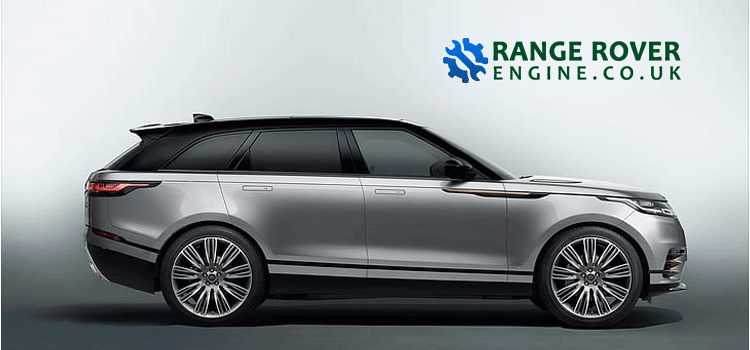How Does The Range Rover 2.0 Engine Comply With Emissions Standards?

The automotive industry is under increasing pressure to meet stringent emissions standards, aiming to reduce the environmental impact of vehicles. The Range Rover 2.0 engine, known for its blend of performance and efficiency, exemplifies how modern engineering can comply with these regulations. We explores the various aspects of how the Range Rover 2.0 engine meets emissions standards, with a focus on technologies and practices such as Engine Replacement, Reconditioned Engines, and Supply and fit services that help maintain and enhance its compliance.
Advanced Combustion Techniques
One of the primary ways the Range Rover 2.0 engines complies with emissions standards is through advanced combustion techniques. The engine utilizes precise fuel injection and combustion control to optimize the burning process, reducing the formation of harmful pollutants such as nitrogen oxides (NOx) and particulate matter (PM). By ensuring more complete combustion, the engine not only enhances fuel efficiency but also minimizes emissions. Technologies such as direct fuel injection and variable valve timing play crucial roles in achieving this balance, demonstrating Land Rover’s commitment to cleaner performance.
Turbocharging and Downsizing
Turbocharging and downsizing are key strategies employed in the Range Rover 2.0 engine to meet emissions standards. By using a smaller engine displacement combined with turbocharging, the engine can deliver high performance while consuming less fuel and producing fewer emissions. The turbocharger increases the engine’s efficiency by forcing more air into the combustion chamber, allowing for better fuel burn and power output. This approach not only helps in meeting stringent emissions regulations but also contributes to improved fuel economy, making it a win-win situation for both the environment and the driver.
Exhaust Gas Recirculation (EGR)
Exhaust Gas Recirculation (EGR) is another vital technology that helps the Range Rover 2.0 engine comply with emissions standards. EGR works by recirculating a portion of the engine’s exhaust gases back into the intake manifold, where it mixes with fresh air. This process reduces the combustion temperature, which in turn lowers the formation of nitrogen oxides (NOx). By integrating EGR systems, the Range Rover 2.0 engine can significantly cut down on NOx emissions, making it a cleaner option for environmentally conscious consumers.
Selective Catalytic Reduction (SCR)
Selective Catalytic Reduction (SCR) is a crucial aftertreatment technology used in the Range Rover 2.0 engine to reduce emissions. SCR involves injecting a urea-based solution, commonly known as AdBlue, into the exhaust stream. The AdBlue reacts with the nitrogen oxides (NOx) in the exhaust gases, converting them into harmless nitrogen and water vapor. This process effectively reduces NOx emissions, helping the engine comply with the stringent Euro 6 emissions standards. The integration of SCR technology showcases Land Rover’s dedication to adopting advanced solutions for cleaner exhaust emissions.
Particulate Filters
Particulate filters are essential components in the Range Rover 2.0 engine’s emissions control system. These filters capture and store particulate matter (PM) from the exhaust gases, preventing them from being released into the atmosphere. Over time, the accumulated particulates are burned off during a regeneration process, ensuring that the filter remains effective. By incorporating particulate filters, the Range Rover 2.0 engine can significantly reduce PM emissions, contributing to improved air quality and compliance with emissions standards.
Engine Replacement and Reconditioned Engines
Engine Replacement and Reconditioned Engines are important practices that support the compliance of the Range Rover 2.0 engine with emissions standards. When an engine reaches the end of its life or suffers significant damage, replacing it with a new or reconditioned engine can restore its performance and emissions characteristics. Reconditioned engines are thoroughly inspected, repaired, and tested to meet or exceed original specifications. These practices ensure that older vehicles can continue to meet emissions standards, extending their lifespan and reducing the overall environmental impact.
Supply and Fit Services
Supply and fit services play a crucial role in maintaining the compliance of the Range Rover engine with emissions standards. These services involve supplying high-quality replacement parts and professionally fitting them into the vehicle. By using certified parts and skilled technicians, supply and fit services ensure that the engine operates at its optimal efficiency and emissions levels. Regular maintenance and timely replacement of critical components such as catalytic converters, EGR valves, and particulate filters are essential for sustaining the engine’s compliance with emissions regulations.
Regular Maintenance and Monitoring
Regular maintenance and monitoring are essential for ensuring that the Range Rover 2.0 engine continues to comply with emissions standards. Scheduled maintenance checks allow for the early detection and rectification of any issues that may affect the engine’s emissions performance. This includes monitoring the condition of the EGR system, SCR system, particulate filters, and other emissions control components. By adhering to a strict maintenance schedule and addressing any problems promptly, owners can ensure that their Range Rover 2.0 engine remains in compliance with the latest emissions standards.
Conclusion
The Range Rover 2.0 engine is a testament to how modern automotive engineering can balance performance and environmental responsibility. Through advanced combustion techniques, turbocharging, EGR, SCR, and particulate filters, the engine meets stringent emissions standards. Additionally, practices such as Engine Replacement, Reconditioned Engines, and Supply and fit services play a crucial role in maintaining and enhancing compliance. Regular maintenance and monitoring further ensure that the engine continues to operate within regulatory limits. As the automotive industry evolves, the Range Rover 2.0 engine stands out as a prime example of how innovation can drive sustainability, offering a cleaner and more efficient driving experience.


